Migrating EBS to Oracle cloud, which is the most comprehensive end to end cloud solution available which fits Oracle Apps unlimited, with just one single vendor providing the infrastructure, integrations, enhancements and the application, which is easier to maintain in a complex hybrid cloud environment.
Move your E-Business Suite to OCI for leveraging improved efficiency, cost savings, and performance gains compared to on-premises deployments and other clouds.
EBS to OCI solution has a deep focus on helping customers maintain the integrity of existing knowledge, customizations, licenses, and integrations. Most E-Business Suite versions can be migrated to Oracle Cloud Infrastructure, and even SPARC- and AIX-based deployments have a path to migrate to the cloud. Lifecycle management in the cloud is provided by E-Business Suite Cloud Manager, which includes backup, provisioning, cloning as well.
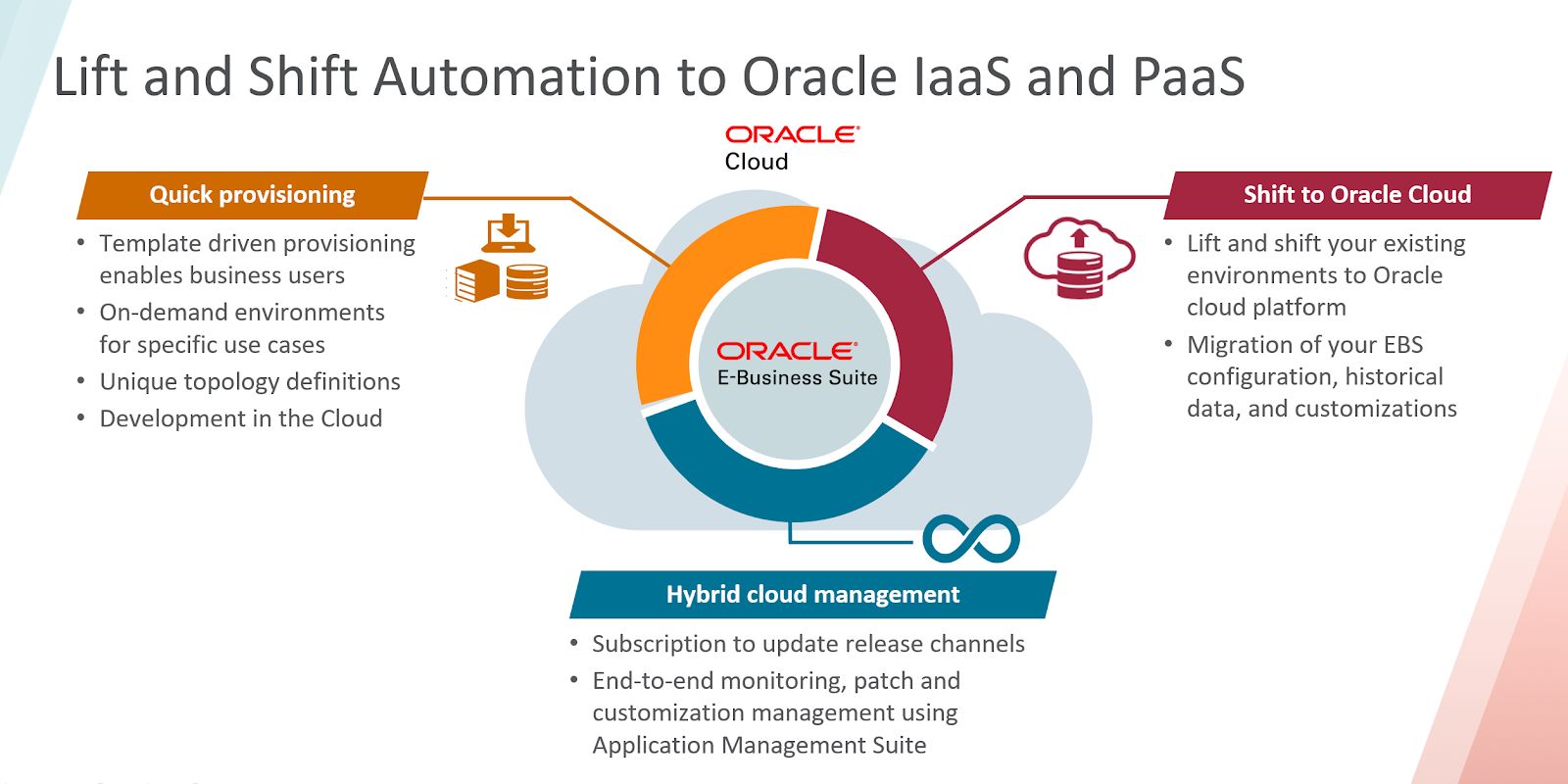
What is Lift and Shift for Oracle EBS
Essentially a like-for-like migration, from on-premises to Oracle Cloud is commonly referred to as Lift and Shift. If you want to continue using the same EBS applications in cloud, with little to no disruptions, no training or adoption costs for business users, you must choose to move your existing EBS on premises application to OCI and benefit from bringing your own licenses as well.
You can also carry all your customizations as is or pick the ones that are critical to your business and bring them to the cloud. Migrating to SaaS is another option but it depends on how much you want to invest and how much you are willing to disrupt. Lift and shift is faster, ensures the same experience, reduces risk, costs, increases agility and future potential for growth. With EBS on cloud customers can choose to maintain their own EBS instance on cloud and can also leverage certified database services to run their Oracle EBS databases.
Accelerate EBS to OCI migration with Automation
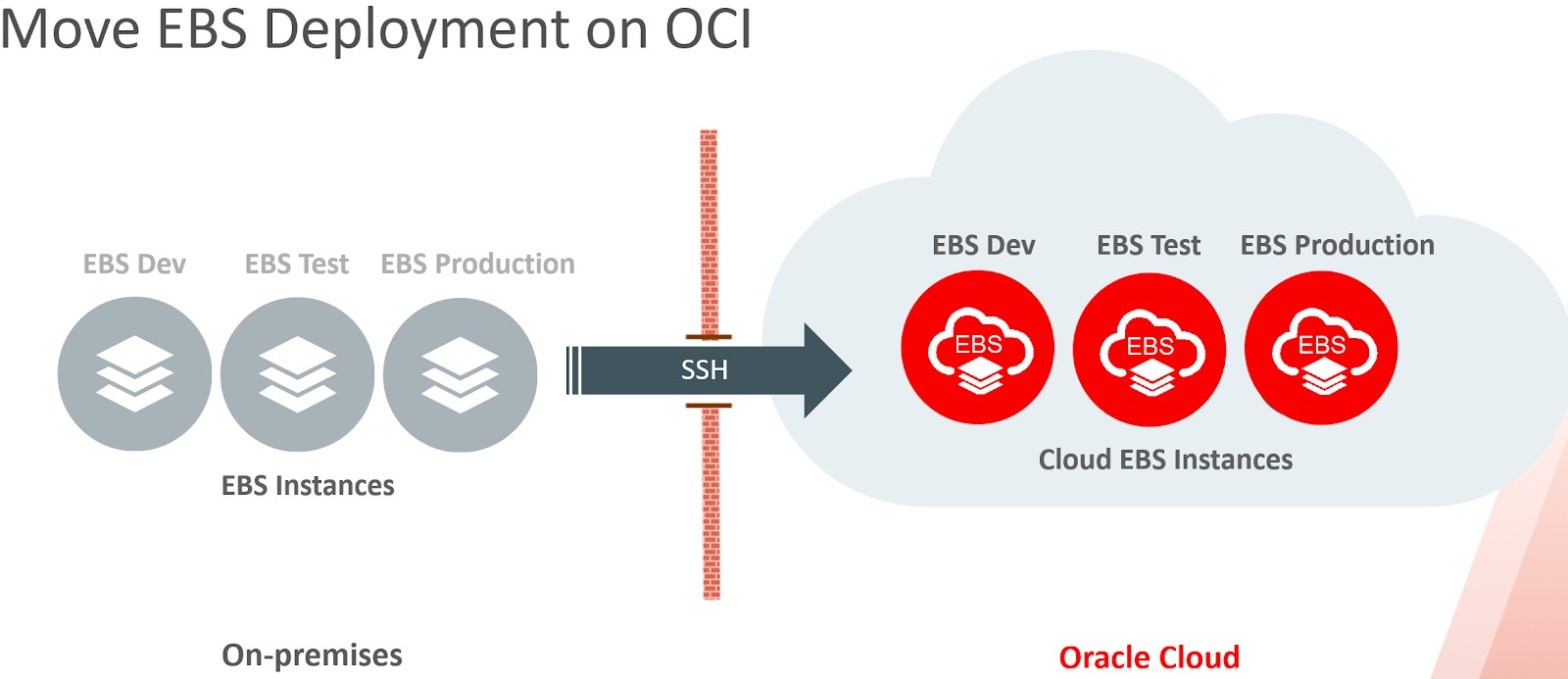
Leveraging Oracle tools for automation by a certified cloud MSP/MSE partner can help accelerate the migration for on-premises Oracle E-Business Suite instances to OCI. With the Lift and Shift automation you have the ability to define your deployment architecture. You will also define your Virtual Cloud Network including subnets, routing tables, security lists and load balancers. The Oracle E-Business Suite instance running on OCI can be used for non-production (test or development) and— when you are ready—for production as well. Check this ebook for 10 things you should do now, before you migrate EBS to OCI.
Drivers for the Lift and Shift Strategy for EBS
If your current high priority business objectives revolve around reducing risk and cost, or supporting increased agility for your company, the Infrastructure as a Service layer (composed of hardware, CPU/compute/storage/networking/backup/disaster recovery) would be the right place to look.
Leveraging Oracle OCI (IaaS) allows you to
- Execute a Lift and Shift (also known as re-platform) to reduce risk of technology obsolescence.
- Exit Data Center thus allowing IT to increase their support for LOB needs.
- Support mergers, acquisition and or divestiture strategies via Rapid environment provisioning in the cloud to support on or off-boarding of businesses units.
- Safeguard data and systems with world class security, backup, storage and disaster recovery solutions.
Use Cases for Lift and Shift for E-Business Suite Customers
Consider the following use cases as per your EBS environment and cloud strategy:
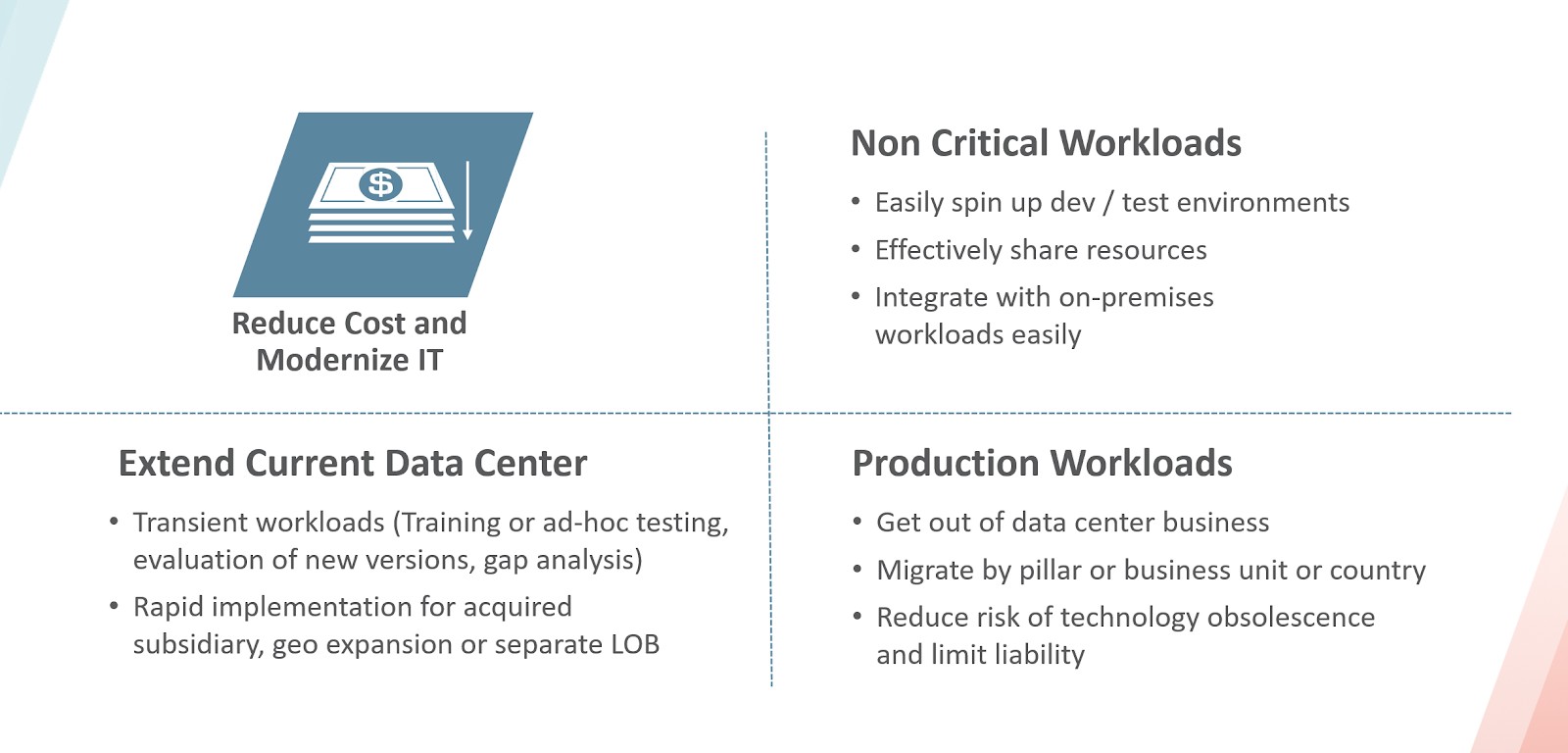
Configuration options or EBS on OCI
With OCI you can choose how much of your EBS you would want over the Cloud. Below are the various options you can consider:
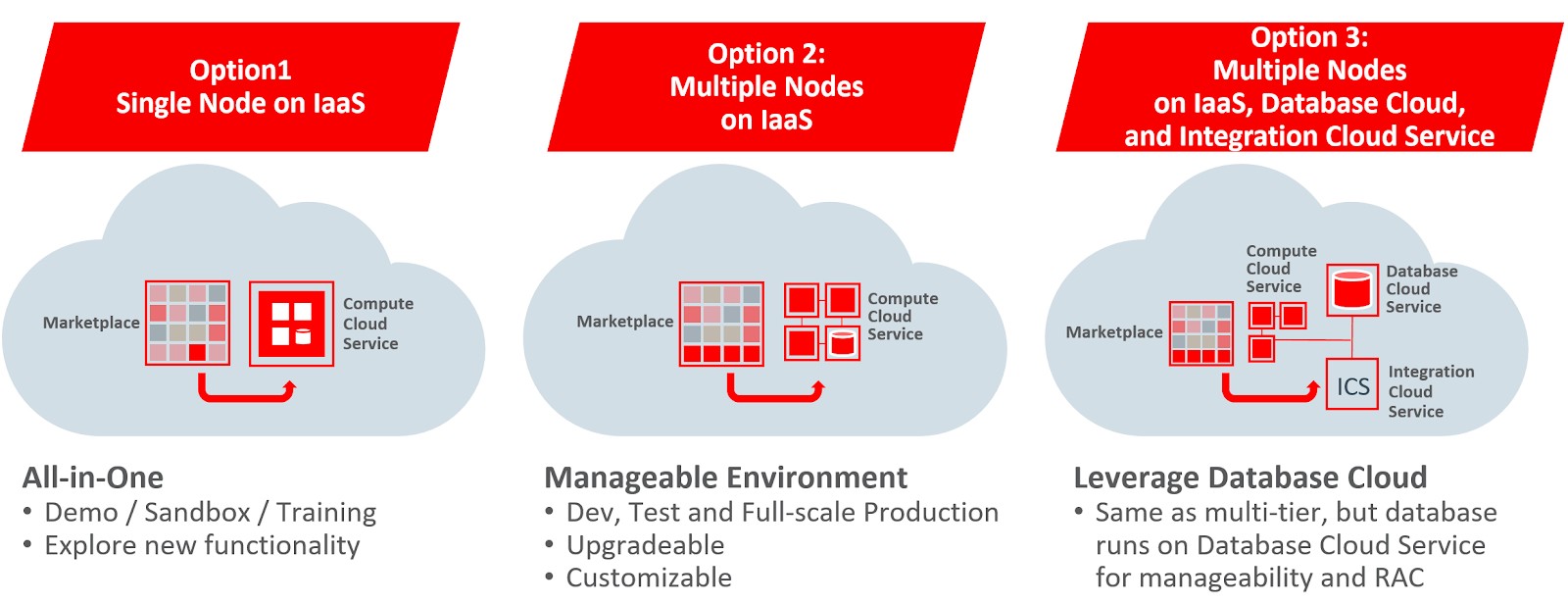
Option 1: Single node on Oracle Compute Cloud Service (IaaS)
The single node on IaaS option combines the application tier and database tier into a single Oracle E-Business Suite machine image.
This option is well-suited for evaluating and testing standard Oracle E-Business Suite functionality and familiarizing oneself with the technology components and features.
Option 2: Multiple nodes on Oracle Compute Cloud Service (IaaS)
Oracle Compute Cloud Service provides the option of multiple nodes on IaaS, allowing you to provision a separate database tier and one or more application tiers. This option allows you to scale the application tier as required, and also comes with an automated provisioning tool that enables you to deploy a new Oracle E-Business Suite installation across Oracle Compute Cloud Service instances.
Due to its flexibility, this option is ideal for various types of Oracle E-Business Suite installation, including supporting production workloads, as well as creating development, testing, and training environments.
Option 3: Compute Cloud Service (IaaS) + Oracle Database Cloud Service (DBCS)
Option 3 involves using a combination of the Compute Cloud Service (IaaS) and the Oracle Database Cloud Service (DBCS). This option is similar to Option 2’s multiple nodes option but does not include deploying the Oracle Database within a virtual machine on the Oracle Compute Cloud Service. Instead, it utilizes a subscription to Oracle’s Platform as a Service (PaaS) or Exadata Cloud Service to provide the necessary Oracle E-Business Suite database.
Oracle Cloud Infrastructure provides 1-node DB systems on either bare metal or virtual machines, as well as 2-node RAC DB systems on virtual machines. Therefore, EBS customers using RAC and moving to OCI can utilize the PSM-based DBCS deployed on OCI, which is available in a 2-node RAC shape or a ¼ Rack Exadata DB on OCI (consisting of 4 nodes). Alternatively, OCI’s DBaaS option for Virtual Machine database systems provides 2 nodes arranged in a RAC shape, also known as VMDB 2-node RAC. These options are ideal for EBS customers seeking to migrate to OCI.
Deployment choices for EBS to OCI Lift & Shift: 3 choices
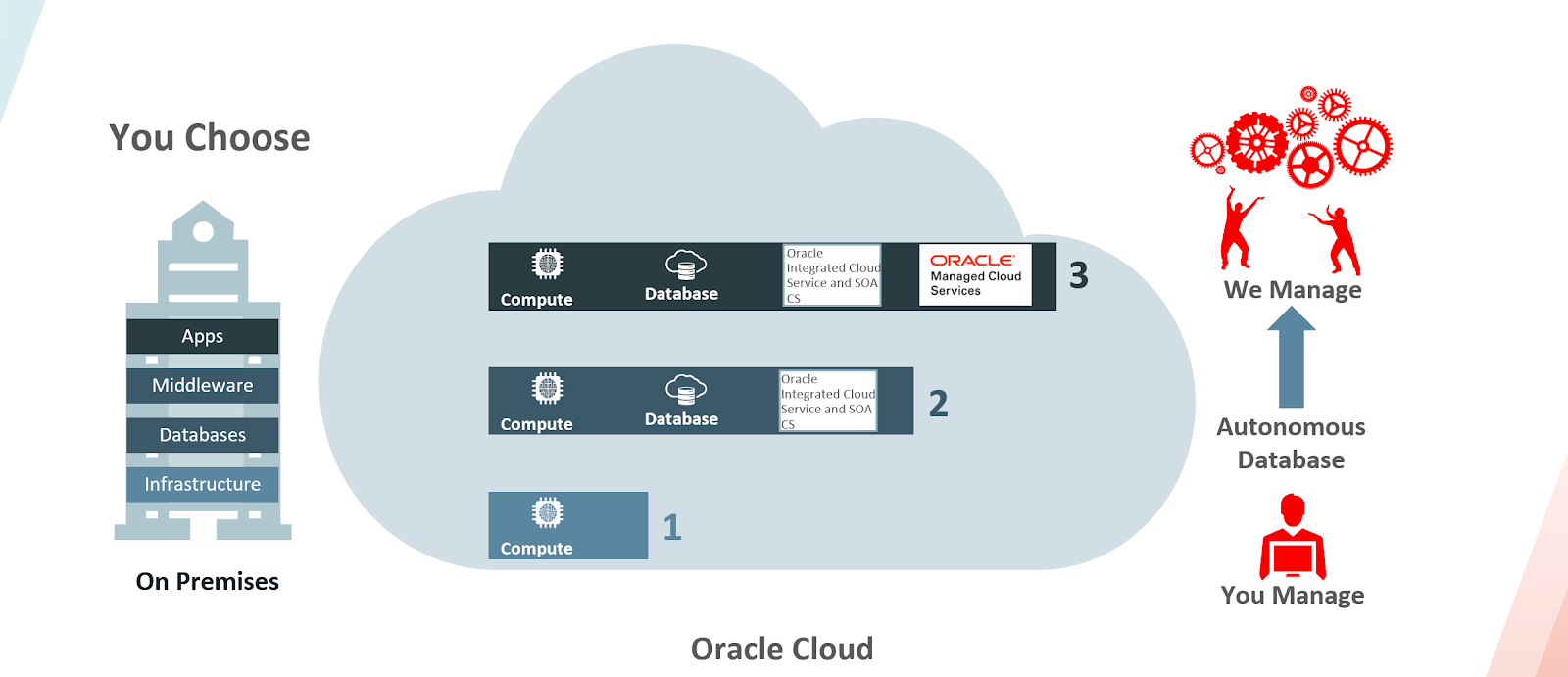
You can choose how you want to deploy, where you’re in control of how much of cloud you want to manage – or not; how much resources you want to manage – or not; data, etc:
- Move all workloads to cloud IaaS – most cost-effective and enables to maintain more control over environment – preserves investment in apps/workloads – you manage
- Moving to cloud platform services preserves investment + modernizes IT with automation and integration capabilities. As a result, you begin to reduce your management burden, reduce operational costs
- To take manageability to the next level, add Oracle Management Cloud for end-to-end hybrid cloud management from a single console. If you wish to get out of the business of managing your environment altogether, leverage Oracle Managed Cloud Services and turn over all administrative burden to Oracle experts.
Succeed with Certified MSP/MSE Partners
- Leading Expertise: Oracle’s certified experts to deliver your Oracle solution.
- Broad Coverage: “End-to-end” lifecycle services across the entire Oracle product footprint
- Global Scale: In 13 countries, serving over 1100 enterprises, 1/3 being Fortune 500 companies.
- Unified Methodology: Based on industry standards, high quality results across complex projects for first time right migration efforts..
- Flexible Delivery: Onsite, offsite, and offshore, along with innovative solutions such as Expert Services and Architecture Services.
Lifecycle of EBS Lift and Shift Migration
Lifecycle of an EBS migration to OCI is a planned approach with a series of steps to succeed. This EBook gives a broad outline for the lifecycle EBS migration to OCI.
- Prepare your IT team to leverage Oracle Cloud Service for rapid provisioning and running mixed workloads
- Define a migration approach addressing your application migration requirements
- Lift and shift your non Oracle and Oracle technologies to Oracle Cloud leveraging Oracle leading practices
- Demonstrate Oracle Cloud benefits & features that support your enterprise needs
- Leverage enhancements and features of Platform and Oracle ERP for modernizing your EBS.

